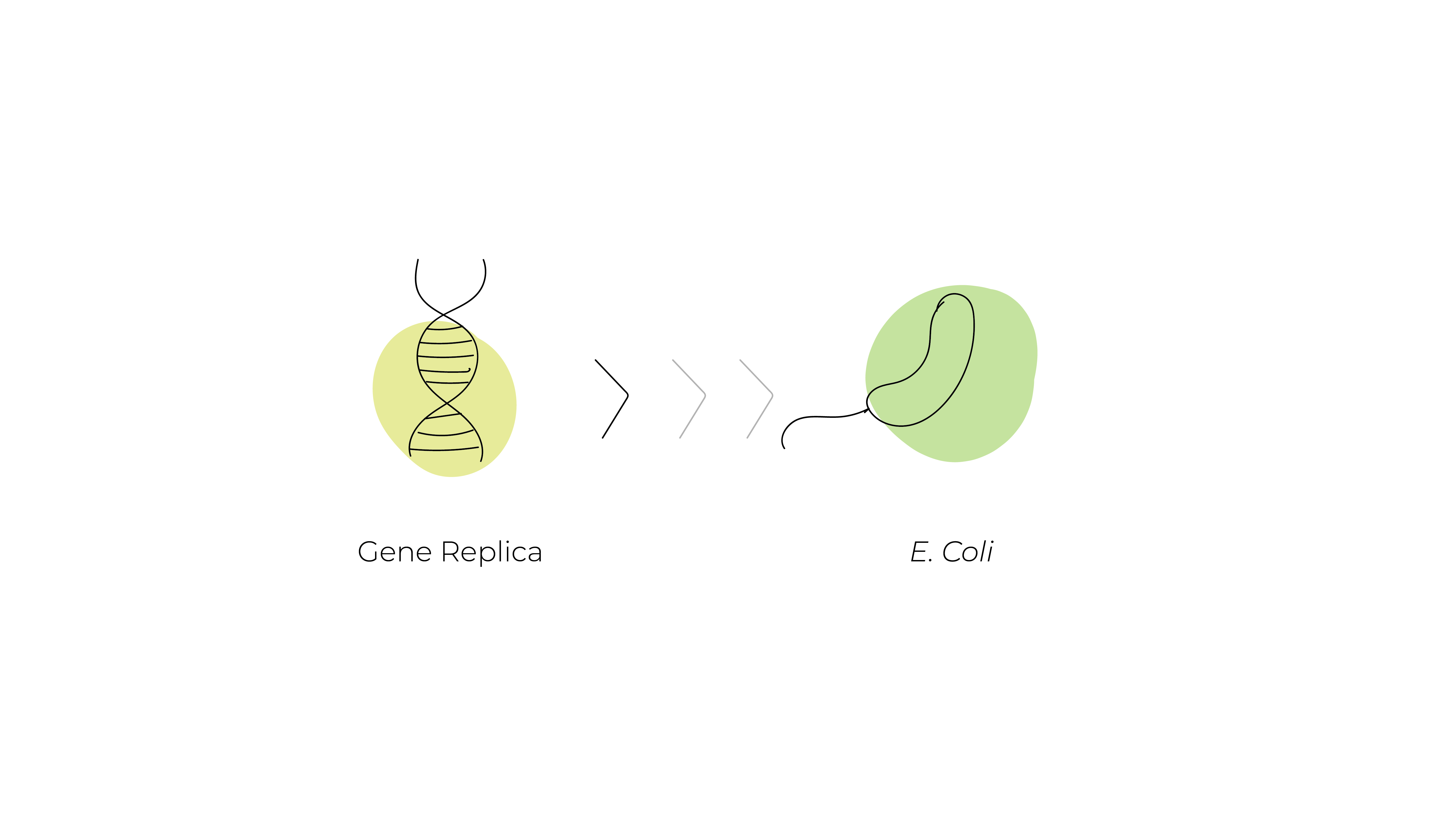biotechnology
The Caulobacter crescentus is an aquatic bacterium that while colonizing a surface it employs a polar polysaccharide known as the holdfast. This localized anchor point has a mechanical property similar to an elastic gel with a high adhesion capacity on hydrophobic surfaces.
Its characteristics supply a powerful, efficient, and functional choice for the industry. The use of synthetic biology optimizes the production of a superior bioadhesive in response to footwear market demand.

CELL DIVISION

SYNTHETIC BIOLOGY
The gene responsible for segregating the polysaccharide matrix is identified and cloned into a plasmid. Then it is introduced into the biosynthetic agent through an electroporation process. We chose Escherichia coli bacterium for it’s well-characterized genome, well-understood physiology, and a well-developed set of synthetic biology tools. Once we have the modified bacteria, the process of growth and production begins. Bacteria will be grown in a bioreactor. To synthesize the holdfast glue, the bacteria must be fed on peptone yeast as the medium. At the end of the production process, purification begins. The substance is filtered, separating the vesicles that contain the polysaccharide matrix from the bacteria. Following the purification stage, the energy needed to polymerize the natural polysaccharides is supplied.

CURRENT STAGE
RESEARCH AND DEVELOPMENT PHASE
We know that we are synthesizing only the compound that secretes the bacteria. An in vitro process is necessary to generate a mechanical force in the adhesive. This process consists of inducing heat in the holdfast glue composed by polysaccharides to establish a polymerization with the substrate.
To complete the R&D phase, the adhesive strength of our product will be characterized and the amount of energy and concentration necessary for a good bond will be defined.